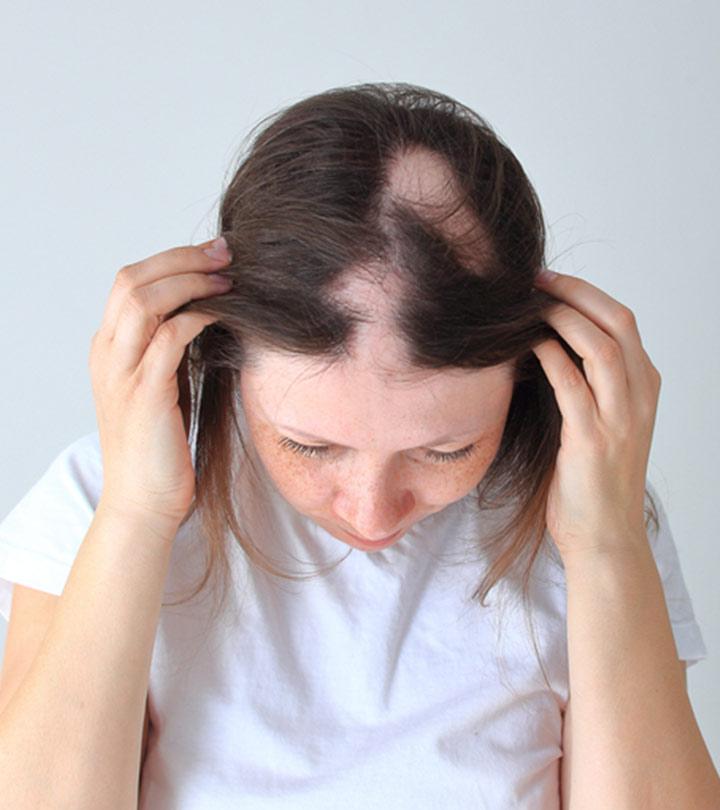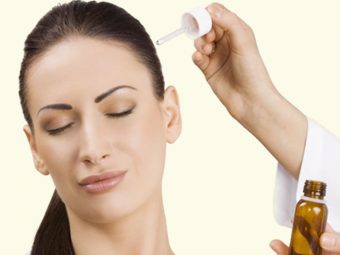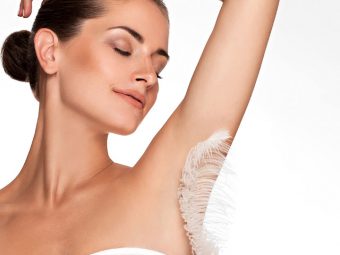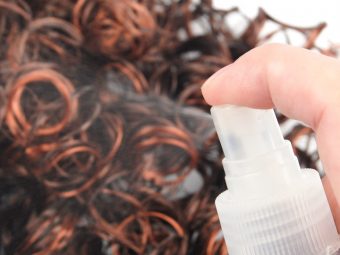Alopecia Areata Hair Loss – Causes, Symptoms, & Treatments
Figure out what's causing your hair loss to determine which treatment will suit you the best.

One of the most common problems most people face is hair loss, specifically alopecia hair loss. Alopecia areata is a medical condition where the immune system attacks its own hair follicles. Although it cannot be cured, you can rely on specific treatment methods to manage the condition.
The reasons for the onset of this condition are many, and there are different types of alopecia. Keep reading to know more about alopecia areata, its causes, treatment options, and possible ways to prevent it. Scroll down.
In This Article
What Is Alopecia Areata?
Alopecia areata is an autoimmune disorder that affects about 25% of the general population (1). It is characterized by non-scarring hair loss that preserves the hair follicle but without any hair shaft growth. It can be seen as patchy or diffuse hair loss. Alopecia areata affects the bulb of the hair follicle, causing the immune system to fight against its growth (anagen). Genetics is the most common cause for alopecia areata. This condition causes patchy bald lesions that may eventually lead to a complete loss of hair on the scalp.
What Happens When You Have Alopecia Areata?
The regular hair growth cycle happens in four phases – anagen, catagen, telogen, and neogen/exogen. In the anagen phase, the hair shafts grow from the hair follicles. Catagen is a regression period, while telogen is the resting phase. Exogen/neogen is the phase where the older hair shafts fall of and newer hair shafts grow from the follicle. Losing up to 100 strands a day is normal. Anything beyond this could mean a case of severe hair loss.
Alopecia areata is characterized by a rapid progression of follicles from the anagen phase to the catagen and telogen phases. This causes the hair shafts to fall out and leaves the affected follicles in a state of prolonged anagen (2). The development of new hair in the affected hair follicles is halted.
Quick Facts
- Alopecia areata is the most common type of alopecia.
- It is a type of non-scarring hair loss.
- Alopecia is more common in men. In women, this condition seems to be more frequent in those over 45 years of age.
- The name “alopecia areata” was coined by Sauvages. The first clinical description of alopecia areata dates back to 14-37 BC (3).
- Alopecia areata accounts for 2% of the dermatology cases in the USA and the UK, 3.8% cases in China, and 0.7% cases in India (4).
Alopecia areata can occur in different types, which we will explore in the upcoming section.
What Are The Types Of Alopecia Areata
- Patchy Alopecia Areata: One or multiple distinct or joined patches of hair loss.
- Alopecia Totalis: Total loss of hair on the scalp.
- Alopecia Universalis: Total loss of hair on the body.
- Alopecia Incognita: Total loss of hair in a diffuse manner. It is diagnosed with a pull test, yellow dots, short and miniature hair regrowth, and a lack of nail development.
- Ophiasis: Hair loss occurring in a band-like shape along the circumference of the head, specifically near the ears and back of the head.
- Sisaipho: Chronic alopecia that occurs everywhere except the border of the scalp.
- Marie Antoinette Syndrome: A sudden “overnight” graying of hair paired with an episode of acute diffuse alopecia. This type of hair loss is more common with pigmented hair.
- Reticular Alopecia Areata: Patches of alopecia occurring with well-preserved narrow bands of hair in between (3).
- Diffuse Alopecia Areata: Widespread and acute hair loss, which is commonly mistaken for androgenic alopecia or chronic telogen effluvium (3).
Alopecia areata has multiple causes. We have covered them in detail in the following section.
Causes Of Alopecia Areata
- Genetic Factors: The most prevalent cause of alopecia areata appears to be genes. Alopecia affects twins, siblings, and generations of families with affected individuals. Single genes that are commonly associated with related autoimmune disorders have shown to play a role in alopecia areata.
- Autoimmune Disorders: Autoimmune disorders like vitiligo, lupus, and thyroid issues have been found to cause alopecia areata. Research shows that alopecia is four times more likely to develop in individuals with vitiligo (3).
- Auto-antibodies: Auto-antibodies have been noticed quite frequently in those dealing with alopecia areata. These antibodies induce anti-follicular activity and may even cause follicular inflammation (3).
- Cellular Immunity: Certain lymphocytes (a type of immune cells) may release cytokines that prevent follicular growth and inhibit hair synthesis (3).
- Atopy: Atopic diseases are commonly associated with early-onset and chronic forms of hair loss. Atopic diseases like sinusitis, asthma, rhinitis, and atopic dermatitis are common in people with alopecia areata (1). In Korea, patients with atopic diseases also had an early onset of alopecia areata.
- Trauma And Stress: Psychological trauma and emotional stress can cause alopecia areata. Stress and trauma produce neuromediators that may inhibit hair growth (3).
- Nutrient Deficiency: In a study, 24-71% of women with alopecia areata were found to have iron deficiency (5). Low zinc levels were also observed in patients with alopecia areata (6).
In the following section, we discuss the signs and symptoms of alopecia areata.
Symptoms
Here are some of the signs and symptoms of alopecia areata.
- Exclamation point hairs seen at the margins.
- Oval or round bald patches that appear on the scalp.
- The bald patches become smooth.
- Hair loss on different parts of the body.
- Appearance of new and larger bald spots that may join prior bald regions.
- Production of oil in areas with affected hair follicles.
If you experience one or more of these symptoms, consult a doctor for a professional diagnosis.
Diagnosis
A case of alopecia areata can be confirmed by a biopsy and a trichogram.
- Biopsy: A biopsy determines the exact type of hair loss that occurs. A good sample of pillar follicles is extracted with a bistoury.
- Trichogram: Some hair is extracted from the border of a bald patch. This hair is checked to determine its growth phase.
Doctors might also perform a pull test (where hair is gently tugged to check if any hair is shed).
Treatments
Natural Treatments: Alopecia areata has many natural forms of treatment. These treatments are said to have fewer to no side effects (7).
- Ginkgo biloba or Indian gooseberry mixed with coconut oil can be used to stimulate hair growth.
- Onion juice can be applied to hair by itself or paired with honey to stimulate hair growth and combat dandruff.
- Rosemary and lavender oils can be mixed with a carrier oil and massaged into the scalp to stimulate hair follicles.
- Walnut oil can be applied to hair roots and massaged into the scalp to promote hair growth.
- A paste of licorice, milk, and a pinch of saffron can be applied to hair and left overnight. This is an effective treatment for hair loss that may stimulate hair growth.
- Using hair packs and masks made of natural ingredients may improve hair health.
Medications
Medications like topical minoxidil, topical tretinoin, rubefacient, corticosteroids, intralesional infiltrations, anthralin, diphencyprone and cyclosporin might be prescribed to combat alopecia areata. However, these drugs can have side effects like hyperpigmentation. Immunotherapy and Puva therapy might also be recommended.
Aromatherapy
Aromatherapy may be an effective treatment for alopecia. The oils extracted from rosemary, thyme, lavender, wolf’s bane, basil and others may stimulate hair growth.
Nutrient Supplementation
Minerals and vitamins play an important role in hair growth (8). A deficiency of minerals and vitamins can induce hair loss. Minerals like calcium, iron, copper, magnesium, iodine, and zinc support hair growth. Vitamins B3, B5, and folic acid, and vitamins A, C and E may improve hair health.
Note: Take nutrient supplements in prescribed doses. Excess supplementation may cause hair damage.
Food Habits
Overconsumption of vitamins and minerals can also cause hair loss. Many supplements often surpass the recommended dosage and may cause potential damage. The best way to ingest these nutrients is through your food. Eggs, yogurt, soy, green vegetables, nuts, carrots, fruits, etc. are all excellent sources of minerals and vitamins that aid body and hair health.
Apart from these treatment options, you also may follow certain tips to help prevent or slow down hair loss.
Prevention Tips
- Reduce the use of products with excessive chemicals as they can damage your hair.
- Regular exercise and yoga can help relieve stress and may help prevent associated alopecia areata.
- A healthy diet impacts your hair growth. Eat right and reduce the intake of processed foods.
- Opt for natural and organic hair care products, packs, and masks. Many natural ingredients are known to help stimulate hair growth and prevent hair loss.
- Massaging the scalp can stimulate hair growth by improving blood circulation (9). Massage your scalp with some warm oil once a week to promote hair growth.
Can Alopecia Areata Be Reversed?
Alopecia areata pushes hair follicles into a prolonged anagen phase and halts the hair follicle development. While the hair follicles are not damaged, they need to be restimulated to promote hair growth. Regular hair maintenance and the right treatments may help reduce alopecia areata, and hair may regrow in certain areas. However, more research is warranted in this regard. If hair regrowth is not stimulated, one may opt for hair transplantation and restoration therapies.
Alopecia areata is a form of hair loss that results in bald patches on the scalp. This condition may be caused due to an autoimmune response or, in some cases, due to genetics. Alopecia hair loss treatment can be natural or medication-based. Your healthcare provider may recommend a course of corticosteroids and topical minoxidil to soothe alopecia. Your locks may take some time to recover and regrow, but if you treat the condition gently and steadily, you should not suffer long-term damage. If you are bothered by the bald patches or are feeling self-conscious, you can try wearing wigs or getting a hair transplant.
Frequently Asked Questions
Is alopecia areata serious?
No, alopecia areata is not a serious medical condition. However, it can cause people anxiety and psychological distress.
What is the difference between alopecia areata and alopecia?
Alopecia is an umbrella term for all the different types of alopecia. Alopecia areata is a type of alopecia.
Does alopecia worsen with age?
Not necessarily. Alopecia can develop at any age due to multiple factors. It is most commonly seen in people under 40 years of age (1).
Is garlic good for alopecia areata?
Yes, studies indicate that garlic may stimulate hair growth in people with alopecia (10).
Does turmeric help with alopecia?
Yes, curcumin, the active ingredient in turmeric, in combination with piperine and capsaicin may help stimulate hair growth (11). Ensure that you conduct a patch test before using turmeric.
Key Takeaways
- Alopecia is a condition in which the immune system attacks hair follicles, leading to hair loss and a halt in new hair growth.
- There are multiple types of alopecia that differently affect hair growth on the scalp, like reticular alopecia areata, diffuse alopecia areata, and sisaipho.
- Alopecia can be caused by many factors like genetics, trauma, stress, and nutrient deficiencies.
- It can be managed with natural remedies, medication, aromatherapy, nutrient supplements, and diet.
Sources
Stylecraze has strict sourcing guidelines and relies on peer-reviewed studies, academic research institutions, and medical associations. We avoid using tertiary references. You can learn more about how we ensure our content is accurate and current by reading our editorial policy.
- Alopecia Areata
https://www.ncbi.nlm.nih.gov/pmc/articles/PMC5573125/ - Alopecia Areata: Alter ations in the Hair Growth Cycle and Correlation With the Follicular Pathology
https://pubmed.ncbi.nlm.nih.gov/3954954/ - Alopecia Areata: a Revision and Update
https://www.scielo.br/pdf/abd/v80n1/en_v80n01a09.pdf - Etiopathogenesis of Alopecia Areata
https://www.longdom.org/open-access/etiopathogenesis-of-alopecia-areata-2167-0951.1000123.pdf - The Diagnosis and Treatment of Iron Deficiency and Its Potential Relationship to Hair Loss
https://pubmed.ncbi.nlm.nih.gov/16635664/ - Zinc and Its Status in Some Dermatologic Diseases–A Statistical Assessment
https://pubmed.ncbi.nlm.nih.gov/3442079/ - Alopecia: Herbal Remedies
https://www.researchgate.net/publication/215800523_ALOPECIA_HERBAL_REMEDIES - The Role of Vitamins and Minerals in Hair Loss: a Review
https://www.ncbi.nlm.nih.gov/pmc/articles/PMC6380979/ - Standardized Scalp Massage Results in Increased Hair Thickness by Inducing Stretching Forces to Dermal Papilla Cells in the Subcutaneous Tissue
https://www.ncbi.nlm.nih.gov/pmc/articles/PMC4740347/ - TREATMENT OF ALOPECIA AREATA WITH TOPICAL GARLIC EXTRACT
https://www.researchgate.net/publication/260656650_TREATMENT_OF_ALOPECIA_AREATA_WITH_TOPICAL_GARLIC_EXTRACT - Efficacy of a mixed preparation containing piperine, capsaicin and curcumin in the treatment of alopecia areata
https://onlinelibrary.wiley.com/doi/abs/10.1111/jocd.14931












